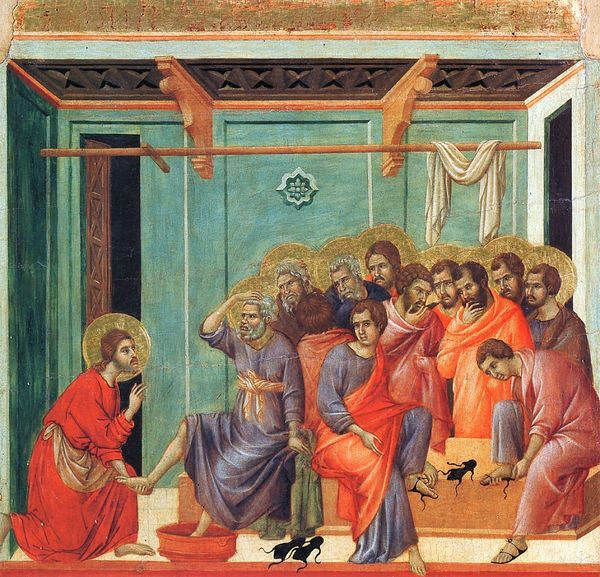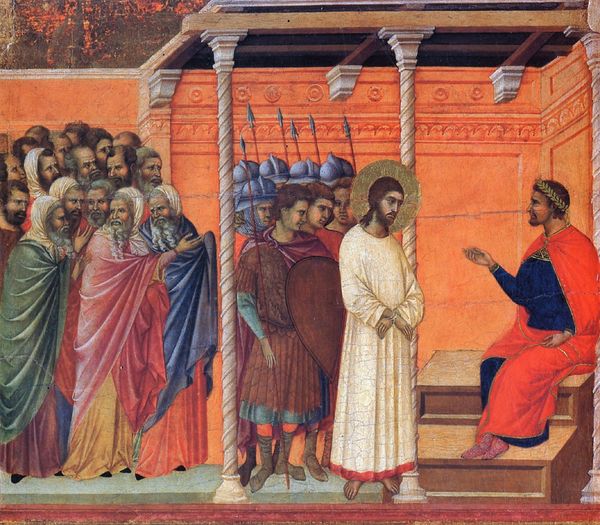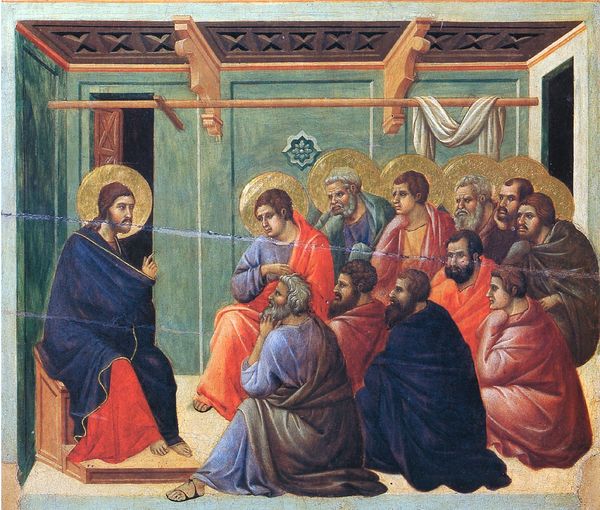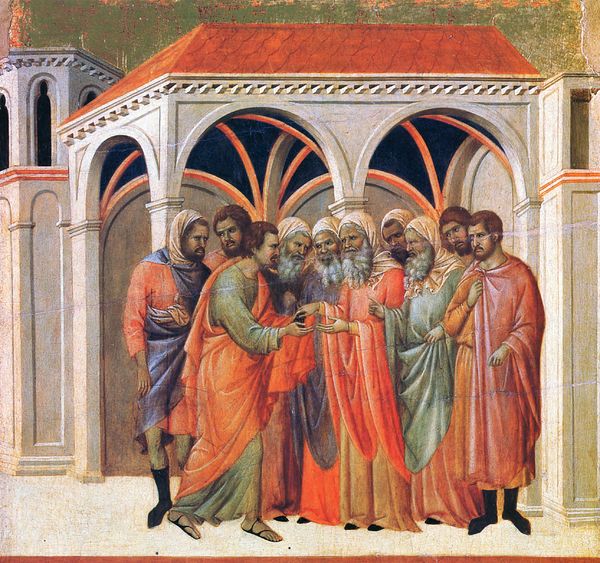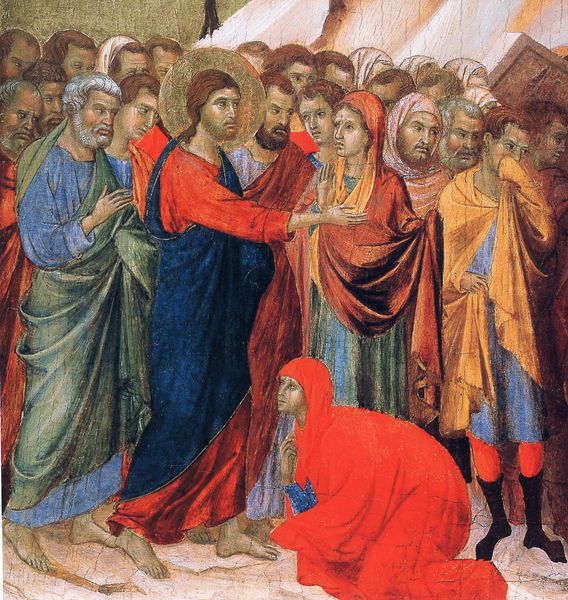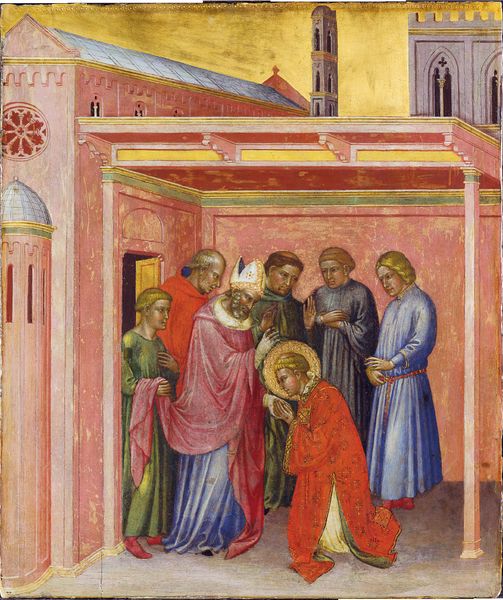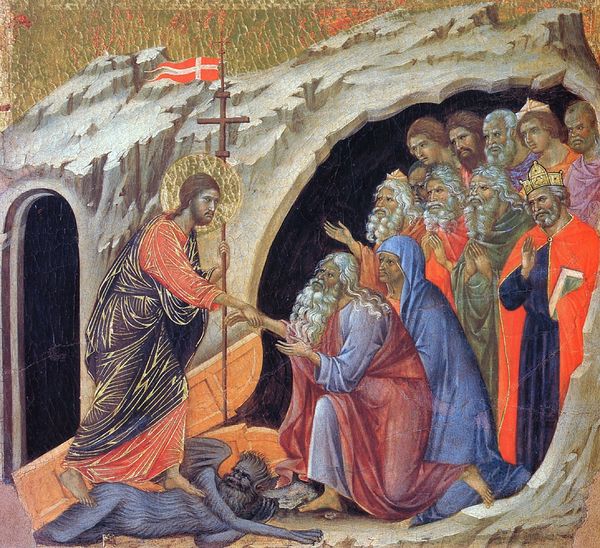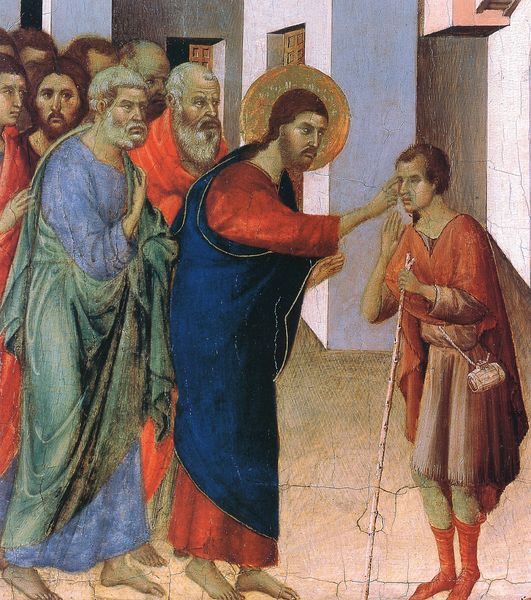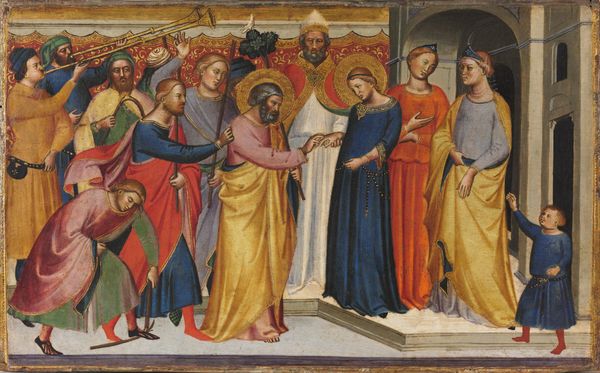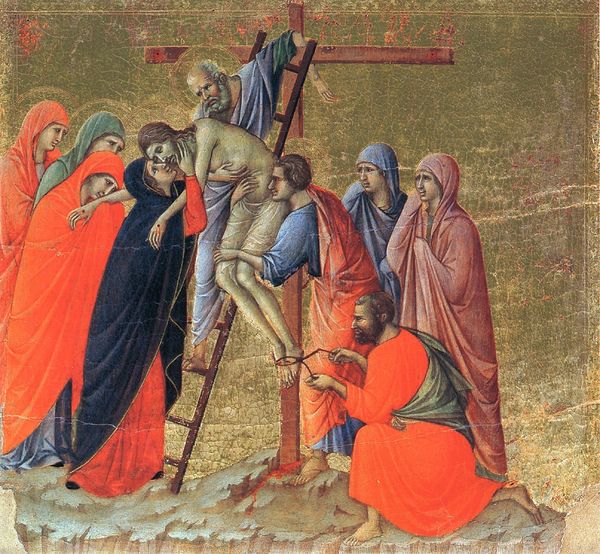
tempera, painting
#
medieval
#
narrative-art
#
tempera
#
painting
#
sienese-school
#
figuration
#
oil painting
#
jesus-christ
#
soldier
#
christianity
#
history-painting
#
italian-renaissance
#
christ
Dimensions: 51 x 53.5 cm
Copyright: Public domain
Editor: This is Duccio's "Pilate washes his hands," a tempera on wood panel from 1311. The scene feels really staged, everyone seems placed so deliberately. What are your thoughts when you look at this piece? Curator: What I see is an intentional commentary on the socio-economic underpinnings of religious narrative, rendered through the specific labor of crafting a panel painting in 14th century Siena. Look closely at the application of tempera. Can we really separate the religious meaning from the physical process of production, from the acquisition of materials, to the labor involved, the commissioning patron, and the intended audience’s consumption? Editor: So, you're saying the meaning is tied to how it was made, not just what it depicts? Like the cost of the ultramarine pigment for Mary's robes or the time spent layering the paint... Curator: Precisely. Consider the gilding. It isn't just decorative, but signals a deliberate investment of resources, transforming a narrative scene into a luxury commodity for the church, masking real human cost in religious art. The physical making, the commerce – these shaped how the story was received. It challenges the conventional boundaries between "high art" and labor. Editor: I never really thought about it like that, focusing more on the biblical story, but now I see how materials and making give another layer of significance to Duccio’s work. Curator: Absolutely. This changes my understanding, too, reminding us how inseparable the spiritual and material worlds truly were.
Comments
No comments
Be the first to comment and join the conversation on the ultimate creative platform.


